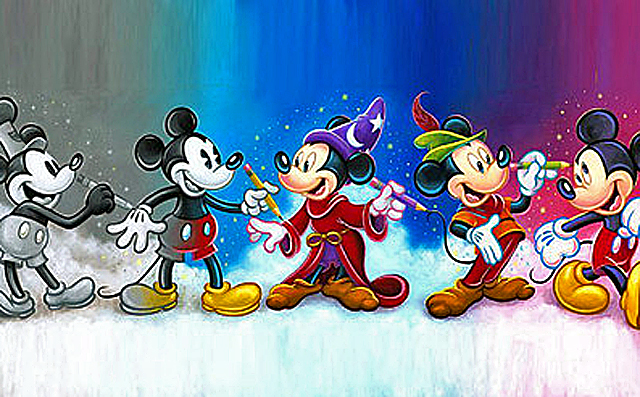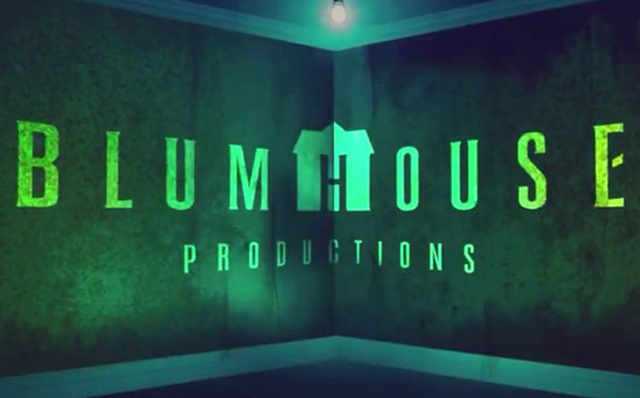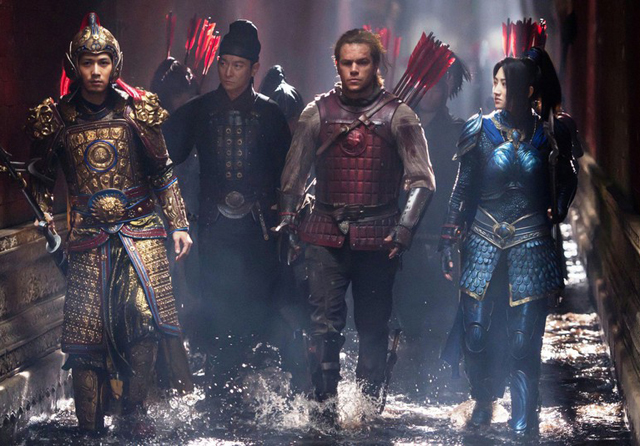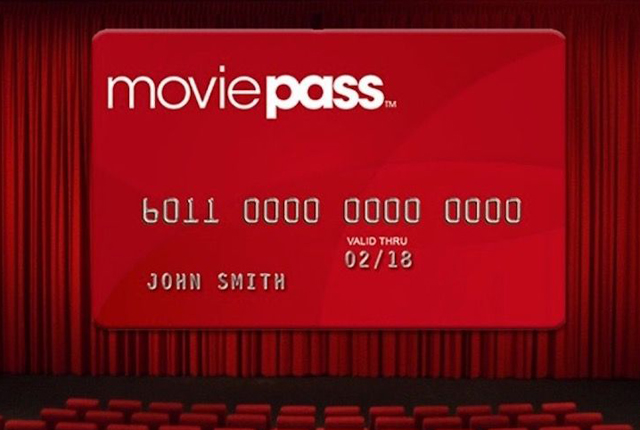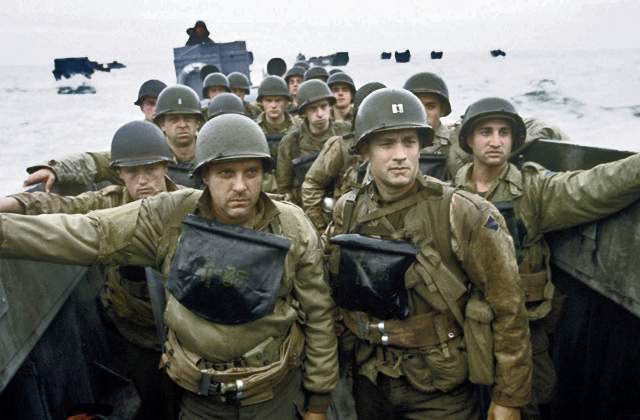
The legacy of the Harry Potter films over the last decade has been a fruitful one for those involved with it’s creation. Author J.K. Rowling has further expanded the universe in which she has created into, among other various things, several spinoff books, a whole backstory franchise called Fantastic Beasts, as well as an online community network where fans of the novels can experience a connection to the Potterverse with a uniquely personal touch. But central to all of that is the seven volume series devoted to the boy wizard himself. Harry Potter’s journey captivated the world, both on the page and on the screen, and nearly a decade after the conclusion of that journey, audiences have been left with a deep attachment to the Wizarding World. But the interesting thing is that it isn’t Harry as a character alone that continues to hold a special place in the hearts of all, but really everything in the series as a whole. Audiences of all kinds talk about everything from the rules of Quidditch, to which house in the school of Hogwarts is the best, to their favorite side characters, and often it’s Harry himself that factors least within their fandom, partially because what more is there to say about him. It’s the discussions of the characters that inhabit Harry’s world that I find fascinating, because it reveals so much about how people project themselves into the story. Because Rowling set her story within a classroom setting, we naturally think about the types of people we knew ourselves in school, especially our friends. Harry’s story is shaped by his friendships, and in particular, those of his closest allies; the resourceful and bright Hermoine Granger and the clumsy but loyal Ron Weasley. Most fans put more value into Hermoine’s role in the story, but I would argue that Ron’s role in the story has just as much merit, and sadly he far too often is misunderstood as a hero, even by the author herself.
I thought it was a very peculiar stance made by J.K. Rowling when she gave an interview to Wonderland Magazine back in 2014. In the interview, she stated that she believed that Hermoine should’ve ended up with Harry Potter at the end of the series and not Ron as she did in the books. The reason she wrote their budding relationship into the books is because it was something that was always part of her overall draft of the full narrative of the books, and over time as she soured on the idea of bringing them together, she still stuck by the original arc, because it was already too intertwined into the full narrative. She also made a shocking confession earlier that she even considered killing Ron off before the novel’s finale. Thankfully, she never utilized these narrative angles, but you have to wonder, why did she feel so negative about such a beloved character. It perhaps had more to do with the way his character meshed with that of Hermoine. Their relationship is certainly one of those “opposites attract” types, with the hyper intelligent girl falling for the simple minded boy. In a way, I feel that Rowling felt ashamed of the point that, by story’s end, Hermoine ends up turning into some kind of reward for Ron because of his good deeds, and she didn’t want her independent minded heroine turned into a trophy. In addition, it seemed from her statements in the interview that she didn’t view Ron as the ideal kind of man, noting that him and Hermoine were likely to have gone through numerous couples therapy sessions. That last point feels especially unfair once she states how she would have preferred Harry to have been Hermoine’s instead, as if Harry wouldn’t have had relationship issues himself, especially given his baggage throughout the story. Regardless of what excuse she gave in her interview, Rowling’s feelings towards Ron I feel stem from a far more problematic issue found within most literature and media overall, which is the dismissive attitude against side characters that sometimes are referred to as “second bananas.”
The “second banana” moniker has come over the years to refer to sidekick characters, particularly those that are intended to get a laugh from the audience. The term actually originates back to vaudeville, referring to a performer who is the recipient of the punchline from the headlining comic; namely, the one who receives the banana. A staple of comedy for many years, the second banana served the role of punctuating the gags, but sometimes the role could be less meant for a comedic situation. Sometimes, the role of the second banana could be filled by an assistant to a titular hero, as a means of reinforcing the good deeds or grand discoveries they have accomplished. Think of the value that Dr. Watson adds in witnessing the brilliance of Sherlock Holmes’ deductions. Think of the guidance that Tonto gives to the Lone Ranger as they travel across the Wild West. Think of the undying assistance the Alfred the butler lends to Batman. Second bananas have a narrative purpose beyond just being comic reliefs. But, for the most part, these types of characters continue to be valued less for their actual worth as an individual character and more for what they do to service the story or just the punchline. Interestingly, sometimes the second banana rises out of the shadow of his or her more famous star companion and actually becomes the star themselves. When you think of comedy teams like Abbott and Costello, Laurel and Hardy, and Martin and Lewis, the ones that standout is the person who gets the biggest laugh, and it’s usually the wackier of the two that is the recipient of the punchline. Sometimes the whole direction of the story rests on the actions of the second banana, especially when the main hero is in their darkest point. And that more than anything, is what makes a second banana character sometimes the most important character in a story overall.
One particular place where you see a lot of emphasis put on characters of this type is in animated films, particularly those made by Disney. They have especially influenced the growth of sidekick characters over the years, mainly due to the fact that they usually are the ones that end up being the more marketable in the end. With Snow White and the Seven Dwarves (1937), they found their narrative drive in the comedic potential of the seven little men who give shelter and protection to the ritual heroine. Down the line, they began to find that the sidekicks were the ones that audiences especially gravitated towards, favoring them in the toy tie-ins that naturally followed once the movie premiered. Characters like Jiminy Cricket from Pinocchio (1940), Tinker Bell from Peter Pan (1953), Sabastian the crab from The Little Mermaid (1989), Timon and Pumbaa from The Lion King (1994), and Olaf from Frozen (2013) have risen out to be among the most popular characters of all time, even sometimes eclipsing their main stars, and becoming icons themselves. Some of them get there by being the funniest character to be sure, but the best of them also stand out by having worthwhile arcs themselves. Jiminy Cricket’s guidance of Pinocchio coincides with his determination to be a certifiable conscious, complete with an official badge. Sabastian grows from being a hinderance to Ariel’s dreams to being someone intent in letting her be who she wants to be. A fuller story benefits when the side characters go through as much change as their primary hero will. One film, I would argue perhaps accidentally made it’s side characters the real heroes; Sleeping Beauty (1959). In that film, it is the three good fairies who save the day. They sacrifice their powers to protect Princess Aurora, they sneak into Maleficent’s castle without hesitation, and they are ultimately the ones who put the sword into the prince’s hand in order to slay the dragon. The titular princess is almost an afterthought in the end. While sometimes Disney misfires with these kinds of characters (the gargoyles from Hunchback of Notre Dame, for example), they nevertheless know that these characters matter a lot as a part of their on-going legacy.
So, to get back to the subject at hand, why does Ron Weasley not get the love as a character as he should? The history that we associate with second banana types has something to do with that. Ron is a character that is far too often played for laughs; more so in the movies than in the books. He’s a mediocre student, a terrible spell-caster, and lacks a great deal of talent in most things that you would expect from a great wizard. But, the thing that he makes up for amid all his failings is the moral compass that he provides through his friendship to both Harry and Hermoine. Ron is Harry’s window into the Wizarding World, and he helps to steer him through all the negative aspects within. It’s better as part of the narrative for Harry to have befriended someone who is so immersed in the this world that he kind of takes it for granted, never acting as a show off or making Harry feel that he should feel threatened. This is apparent when Ron and Harry first meet aboard the Hogwarts Express. Ron’s attitude towards meeting Harry is just the same as chatting with a new friend; no pretension about Harry’s celebrity status or how ill prepared Harry is for the world he’s about to enter. He finds his value in helping ease his new friend into feeling like he belongs in this world he knows nothing about. Much more importantly, he teaches Harry the real stakes of the Wizarding World, and who is worth trusting and who they should fight for. Apart from the things that make Harry and Ron different, they do have one thing in common, which is an outsider perspective. Ron is lower class and is looked down upon by the wealthy elite at the Hogwarts school, so while he himself is knowledgable about the world of Wizardry, he benefits very little from the fruits of such power. Harry is born into the world a celebrity, but was raised on the outside, knowing nothing about what he truly represents. That combination creates a mutually beneficial friendship for both, and combine that with Hermoine’s Muggle (non-magic) background and you’ve got a pairing of friends born through a shared desire to keep the others on the right path.
If there is one thing that really defines Ron Weasley as more than just a second banana but in actuality a hero in his own right, it’s his position in the story as an ever crucial lifeline. One thing that especially defines every hero’s journey is an inevitable descent into a dark place. Famed scholar Joseph Campbell, who crafted the blueprint for the typical hero’s journey in his examination of the narrative, called this moment in the story the Abyss. In the Abyss, the hero succumbs to either a tragedy or a temptation that shakes the hero’s belief in themselves, leading them to a point where they are on the verge of giving up. Some heroes climb out of this moment by their own determination, but sometimes it takes a secondary element to help the hero see the light again, and sometimes that comes in the form of the sidekick who has stuck by the heroes side. Sometimes, that comes from a forceful kick in the pants to bring the hero out of their despair, like you see from characters like Han Solo and Princess Leia in Star Wars (1977), who help a whiny little farm boy named Luke Skywalker believe in himself again after tragic moments like Obi-Wan’s sacrifice or learning the truth about his father. Ron Weasley, though, owes more of his inspiration to another lifeline character named Samwise Gamgee, the famous companion of Frodo Baggins in J.R.R. Tolkien’s The Lord of the Rings. Sam, like Ron, has little in the way of talents, which makes him an unlikely guardian, but he more than makes up for that in his determination to never leave Frodo’s side, not even in the darkest of moments. Over the course of Tolkein’s trilogy, Sam grows into more than just a buffoonish companion; he ultimately becomes the one who carries Frodo on his back to the summit of Mount Doom and pulls him back from the abyss once Frodo succumbs to the Ring’s dark hold. Had Sam not been there, Frodo would have failed. Ron fulfills the same role in his story, as Harry grows ever more withdrawn and angry during their many trials. A particular narrative element in the book is that Harry and his arch-nemesis, Voldemort, have a lot in common, but what ultimately separates them is that Harry has true friendship, which keeps him empathetic and kind, and ultimately a believer that good will win out in the end.
Ron gives that support that ultimately keeps Harry believing in himself, but he does more than just steer Harry the right way. One of the pleasing aspects of the story that J.K. Rowling crafted is that Ron himself discovers his own strength as the story goes along. Ron starts off as a squeeling coward in the earliest part of the series, but after facing trolls, giant spiders, a whomping willow, and even menacing classmates and faculty, he ultimately has faith in himself enough to stand his ground against dark wizards by series end. It’s particularly crucial at one point in the penultimate film, Harry Potter and the Deathly Hallows Part I (2010), when Harry gives the duty of destroying a Horcrux to Ron, knowing that at that point he has more of the aptitude to get it done in that moment, after Harry has been weakened physically and emotionally by the evil device. With that, Ron overcomes the last bit of weakness in himself and ultimately serves as someone who can change the course of the story himself. I think that when we look at the character of Ron Weasley, we sometimes get stuck in the image of that comic relief character from the earlier part of the story. By the end, we almost forget that as Harry has grown into a hero, so has Ron. By the end, Ron is just as likely to stick his neck out to save the day as Harry is. The only difference by the end is that Harry is the one for a reason; the villain selected him as his foe. I think that J.K. Rowling doesn’t in particular think she did a disservice to the story by involving Ron Weasley in it, and rewarding him with the same spoils of victory. I just think she feels that by linking him with Hermoine that she ultimately didn’t satisfy her own desires for how she would have liked the story to end; that maybe she was just being too cliche with her choice. But, I think in saying so, she is undermining the effectiveness that she had in making a sidekick like Ron more than just the average second banana in her story.
I for one, in the end, love the fact that he and Hermoine grow closer together throughout the story and by the end have cemented their love for one another. He’s not perfect, but neither is Harry Potter for that matter, and I don’t see why J.K. thought any different. Hermoine obviously has a mind of her own, and it’s apparent from the story that what drew her to Ron ultimately is his devotion to doing good even depite his limitations. That, and I think that some of the push-back she would receive from Ron throughout the series also endeared him to her, as most geniuses want to be challenged. What I like so much about Ron is that he does overcome that harsh stigma that follows characters of his type. He becomes more than just the fool in the story on which the punchline is built; he becomes a hero in his own right by the end. The real genius of J.K. Rowling’s series is that she gives that to just about every character as well. Even the most absurd characters get their heroic moment, like Dobby’s heroic sacrifice or Neville Longbottom ultimately destroying the final Horcrux which leaves the villain finally vulnerable. Ron especially gets to standout as a hero because, apart from a brief falling-out in Goblet of Fire, he never leaves Harry’s side. We like to poke fun at the sidekicks and how worthless they sometimes are, but Ron Weasley is in that rare breed of sidekicks who is just as heroic as the hero he’s there to support. One thing that especially makes these second bananas so important to a narrative is the fact that they sometimes are more interesting than the main hero. Though that isn’t exactly the cases for the Potterverse, it is especially true in other media, where the story has to rely upon the supporting characters to add flavor when the main hero proves to be too boring. I find that even though I do like Harry Potter as a character, I find Ron’s journey more fascinating, because of how undervalued his character type usually is. The fact that he has a personality helps, which a perfectly cast Rupert Grint wonderfully supplies, and I can’t imagine what the story would have been like without him. Probably not as good. So, Ron Weasley shouldn’t be undervalued just because he’s not Harry Potter. He’s a wizard with worth too, and the Potterverse as a whole might not have the same effect had he not gone above and beyond his second banana role in this story.
